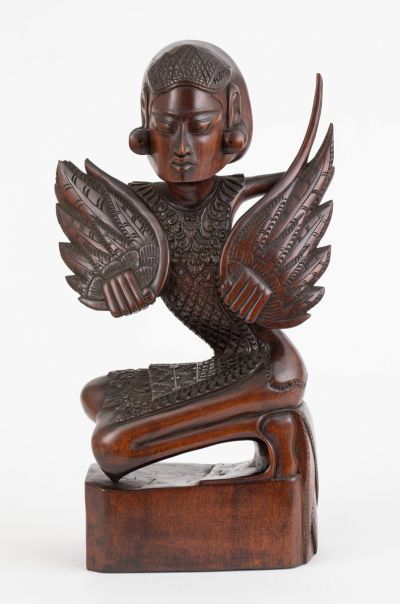
Legong dancer
| Accession Nr.: | 7135 |
|---|---|
| Type: | sculpture; wooden sculpture; carving |
| Date of production: |
circa 1930
|
| Place of production: |
Carved sculpture of a Balinese dancer in traditional costume with dance bellows (wings). Designed according to European taste, in the style of Balinese "art deco".
Legong is a 19th century court dance, characterised by particularly dynamic movements, delicate finger movements and the great flexibility required of the dancer. Originally performed behind closed doors, it was intended exclusively for the entertainment of aristocrats, but later became, like much of the dancing, a tourist attraction.
In Bali in the 1930s, the painters Rudolf Bonnet and Walter Spies founded the Pita Maha, an advocate group based in Ubud, which aimed to provide art education, to promote quality selective individualist art in line with European standards (artists were expected to sign their works) and to advocate for their interests. At the same time, a Sanur school (artists' village) was established on the estate of the art dealer Neuhaus brothers, which offered a freer experimentation, albeit with a lack of education and control.
Legong is a 19th century court dance, characterised by particularly dynamic movements, delicate finger movements and the great flexibility required of the dancer. Originally performed behind closed doors, it was intended exclusively for the entertainment of aristocrats, but later became, like much of the dancing, a tourist attraction.
In Bali in the 1930s, the painters Rudolf Bonnet and Walter Spies founded the Pita Maha, an advocate group based in Ubud, which aimed to provide art education, to promote quality selective individualist art in line with European standards (artists were expected to sign their works) and to advocate for their interests. At the same time, a Sanur school (artists' village) was established on the estate of the art dealer Neuhaus brothers, which offered a freer experimentation, albeit with a lack of education and control.
